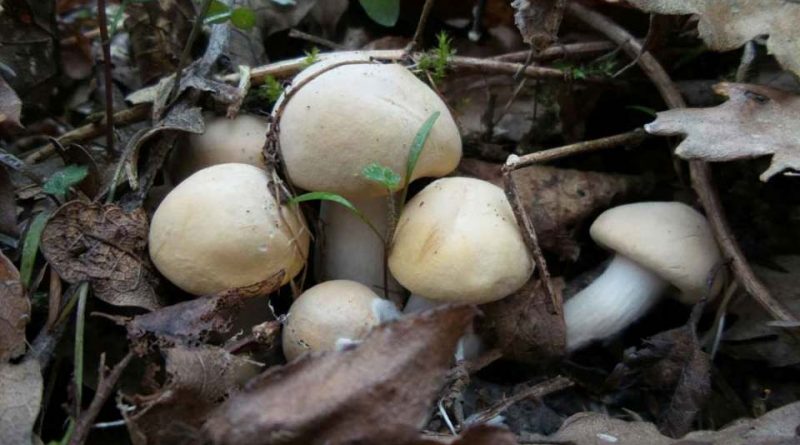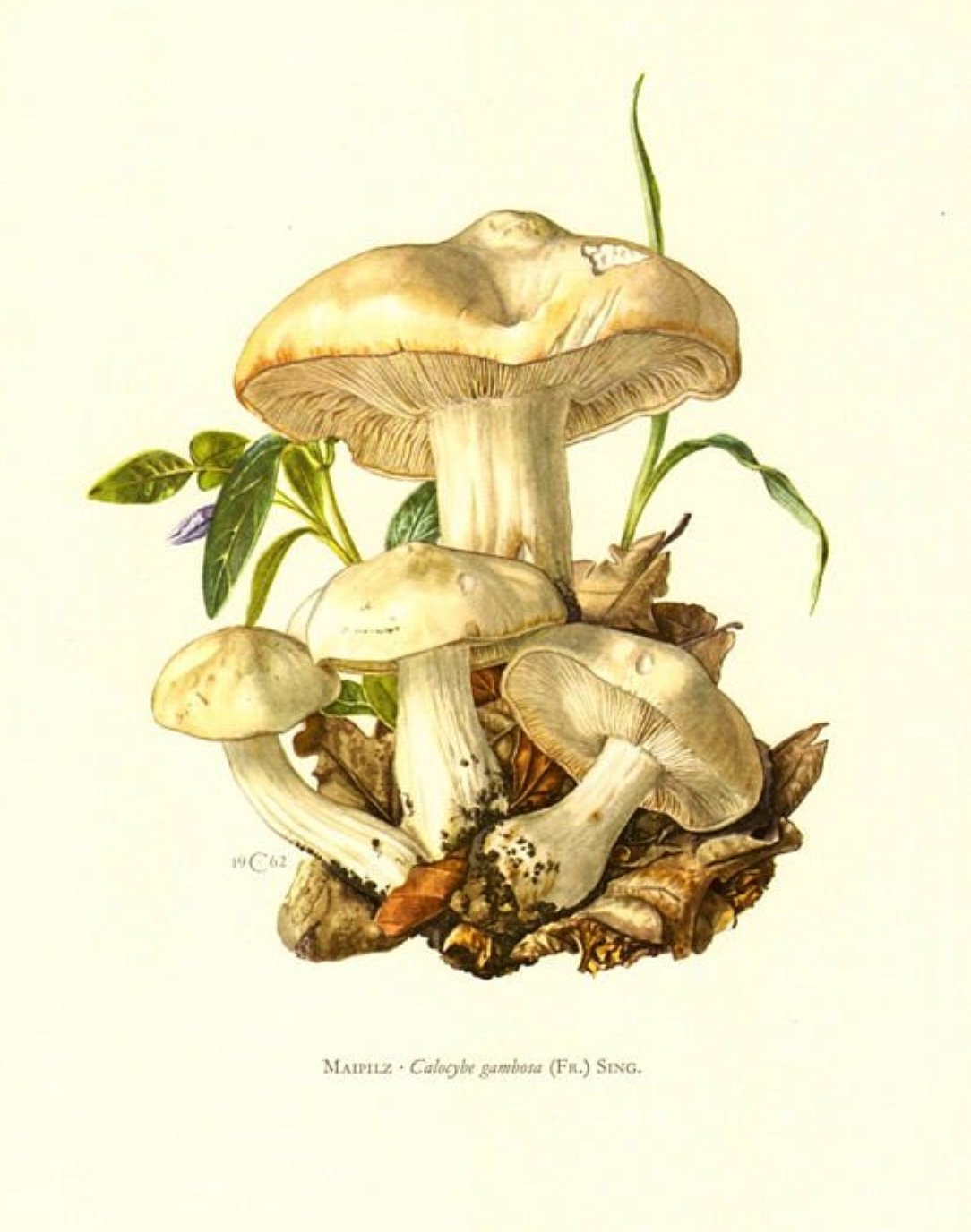Calocybe gambosa
Calocybe gambosa
The Blackthorn (Calocybe gambosa (Fr.) Donk) is a particularly early saprophytic fungus of the Tricholomataceae family.
Systematics –
From a systematic point of view it belongs to the Domain Eukaryota, Kingdom Fungi, Basidiomycota Division, Class Basidiomycetes, Order Agaricales, Family Tricholomataceae and then to the Genus Calocybe and to the species C. gambosa.
Previously this fungus was classified with the name: Tricholoma georgii which is therefore an old synonym.
Etymology –
The term Calocybe comes from the Greek κᾰλος calós, ie beautiful and κύβη cýbe, head: literally mushroom with a beautiful hat. The specific epithet, gambosa, derives from gámba garetto, lower part of the leg: for the lower part of the well-developed stem.
Geographic Distribution and Habitat –
The Calocybe gambosa is a saprophytic fungus, which grows from April to May, in the meadows or at the edge of the forest, often arranged in circles. It is frequently found among bushes of thorny plants like the hawthorn (Crataegus monogyna), the rose hip, the juniper and the prugnolo (Prunus spinosa) from which derives the vulgar name Prugnolo or Spinarolo. It is a particularly early mushroom (among the first to inaugurate the mycological season) and rarely grows in autumn. It is a fungus with gregarious growth.
Description –
The blackthorn is characterized by a hat that in the first phase of development, seems to be intimately welded to the stem and round in shape; subsequently growing it takes shape hemispherical, convex flat and finally almost flat; it is white, but you can find specimens of light hazelnut color, similar to the bread crust, smooth, with the involute margin; the diameter is on average between 5 and 10 cm with the cuticle easily detachable. The lamellae are sarginated to the stem or sinuous-hooked, thick, intercalated by lamellule; these are white tending to cream in the adult specimens, with irregular thread. The stem is firm, massive, sometimes stocky and thinned at the base measuring 3-8 x 1-3 cm. The spores are white in mass, smooth, ovate-elliptical 4-6 x 3-4 μm. The basidia are clavate, tetrasporic, with buckle joints of 17-22 x 4-5 μm. The flesh of this mushroom is very firm, compact, white and with a very grateful smell that tastes like leavened flour and with a similar taste.
Cultivation –
It is not a fungus cultivated in Italy even if some isolated experiences would lead to consider the possibility of its cultivation. It seems that in India its cultivation is already carried out.
Uses and Traditions –
The vernacular name of Tricholoma georgii derives precisely from the tendency to appear, according to popular tradition, on this day near the anniversary of St. George, which falls on 23 April. Obviously it can anticipate or postpone its appearance even a few weeks depending on the altitude or the season. The Calocybe gambosa is considered in some regions an excellent mushroom, among the most tasty and tasty and for this reason much sought after. But this assessment is not universally recognized. Certainly, in some parts of Italy, “festivals” dedicated to this mushroom are celebrated, and in coincidence of such manifestations, the fungus is sought in the same way as the most known and sought porcini mushrooms. Also for this reason its presence has been severely reduced (becoming more and more raa), both for the collection too intensive and the often destructive methods (such as raids in the bushes) or too young specimens. For this reason, the Italian law prohibits the collection of this species for specimens having a hat diameter of less than 2 cm, with a maximum daily collection of 1 kg per person, even if this quantity should be reduced. The species is also protected by a regional law (n ° 34 of 6 October 1987) of the Marche.
Preparation Mode –
The ways in which you can cook and prepare the sloe are practically all those where you can usually cook the most common mushrooms. The experts in the field recommend eating it raw, in salads, and even when you cook it you must do very little, so that its aroma remains unaltered; from raw but it can lower the glycemic level so it is better to eat it cooked. The dried blackthorn is often reduced to a fine powder and transformed into a spice because of its unmistakable and intense aroma that can be used to give an extra taste to dishes based on meat or fish.
Guido Bissanti
Sources
– Wikipedia, the free encyclopedia.
– Cetto B., 2008. Real mushrooms, Saturnia, Trento.
– Pignatti S., 1982. Flora of Italy, Edagricole, Bologna.
– Conti F., Abbate G., Alessandrini A., Blasi C. (edited by), 2005. An annotated checklist of the Italian vascular flora, Palombi Editore.
Warning: Pharmaceutical applications and alimurgical uses are indicated for informational purposes only and do not in any way represent a medical prescription; there is therefore no liability for their use for curative, aesthetic or food purposes.


